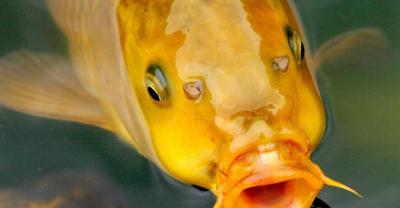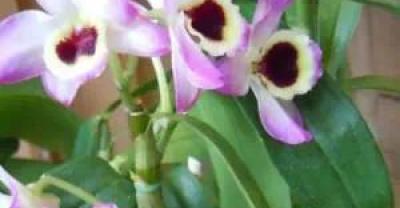The culture method of black leaf Guanyinlian, the leaves of black leaf Guanyinlian turned yellow, soft and rotten, and the tip of the leaf withered.
How to raise Guanyin lotus? People who love flowers and plants are concerned about this type of problems, and those who like to plant Guanyin lotus are probably aimed at its shape similar to the lotus seat, with an auspicious symbol! Well-developed plants will bear a circle of small rosettes under the big rosette. in addition, a red walking stem similar to the orchid will be drawn from the lower part of the leaf clump at the end of spring every year, and there are rosette-like leaflets at the front end of the walking stem. Guanyinlian is widely used. It can be planted in small and medium-sized pots and is used to decorate the study, living room, bedroom and office, which is noble and elegant.

Before we look at the culture methods of Guanyinlian, let's get to know Guanyinlian. At present, there are two kinds of Guanyin lotus on the market, one is toxic, that is, the black leaf Guanyin lotus we are going to talk about today, and the other is non-toxic Guanyin lotus and Buddha lotus. Let's get to know you. Black leaf Guanyin lotus (black leaf taro) how to raise?

Lighting: Guanyin lotus likes semi-overcast, avoid strong light exposure. In the semi-overcast environment, the leaf color is fresh and glossy, the leaf vein is clear, the leaf color is dark green. If the light is too strong, it is easy to make the leaf color dim, until sunburn occurs, the leaf surface is rough, the leaf color is gray, the leaf vein is blurred, and sometimes burn spots occur on the leaf surface; but the light is too weak and easy to cause overgrowth, plant growth slender and easy to lodge.

Temperature: its ecological habit is warm, humid, semi-shady growth environment, the suitable growth temperature is 20-30 ℃, the overwintering temperature is 15 ℃.
Reproduction: Guanyinlian is commonly used for ramet propagation. Generally, when the temperature is high in spring and summer every year, the underground tuber plants with dense tillers are divided along the tuber separation place, so that each part has 2-3 plants, and then planted in the pot. At the same time, it is advisable to keep the basin soil moist and pay attention to foliar spray to facilitate the restoration of new plant growth.

Soil: Guanyin lotus pot cultivation should use loose, well-drained soil rich in humus, generally can use the same amount of rotten leaf soil, garden soil and river sand as the matrix.
Watering: the peak growth period is from April to September, when the soil is moist and the air humidity is high, and sufficient water is required; especially in the summer high temperature period, the leaf water evaporation is large and the water demand is more, such as the lack of water is very easy to wilt the leaves, so it is necessary to often spray water to the leaves and keep the environment moist at the same time, but water accumulation in the basin must be avoided, otherwise it will cause root rot.

Pest control: during the whole growth period, the most common pests are root cutters, snails, snails and nocturnal moths, which mainly harm the new leaves and roots of Guanyinlian. Milol, Luotong, trichlorfon and poison bait prepared with rice bran can be trapped and killed in the field. The main diseases are anthracnose and red spot. The soil should be disinfected frequently. In rainy seasons, 50% carbendazim 800 times and 65% benzoin 600 times should be sprayed to control other diseases. In addition, pay attention to prevent underground tubers from rotting caused by stagnant water.

In addition, Guanyinlian should always keep the soil moist to facilitate its vigorous growth, and it has higher requirements for fertilizer and water. It should apply sufficient organic fertilizer as basic fertilizer during cultivation, need sufficient water before planting to sprout, and maintain a proper supply of fertilizer and water during the growing period. Fertilization is generally applied once every 2-3 months. Attention should be paid to the prevention and control of stagnant water. Proper topdressing of phosphate and potassium fertilizer before and during flowering can make the rhizome hypertrophy, the flower stem stout and improve the flower quality. In the later stage, field management should be strengthened to remove rotten leaves and weeds. The winter dormant period needs to reduce watering, and to stop fertilization, enter the dormant period to clean up the whole garden and cut off all the aboveground parts.
The leaves of the black leaf Guanyin lotus turned yellow, soft and rotten, and the leaf tip withered: 1. "half of the water" was irrigated, that is, the water was not watered thoroughly and there was water seepage at the bottom of the basin. 2. The root system has been frostbitten when it is cold in winter. 3, after the winter, eager to go out of the room, put in a warm place to bask in the sun, temporarily unable to adapt to the abrupt climate. 4. The basin soil has been too wet or too dry for a long time. 5. Put it in the environment of poor ventilation for a long time. 6. The leaves were not cleaned with water for a long time, and dust accumulated, which hindered photosynthesis.
- Prev

Fish culture method "common freshwater ornamental fish"
The white background of Dazheng trichromatic body is dotted with red and black markings # the background color of pure Dazheng tricolor koi is pure white # must not contain other miscellaneous colors.
- Next

Flower cultivation skills: culture methods of 12-volume genus longevity
The 12-volume perennial herb with a very auspicious name is loved by people because of its unique window-like structure and obvious veins.
Related
- On the eggshell is a badge full of pride. British Poultry Egg Market and Consumer observation
- British study: 72% of Britons are willing to buy native eggs raised by insects
- Guidelines for friendly egg production revised the increase of space in chicken sheds can not be forced to change feathers and lay eggs.
- Risk of delay in customs clearance Australia suspends lobster exports to China
- Pig semen-the Vector of virus Transmission (4)
- Pig semen-the Vector of virus Transmission (3)
- Five common causes of difficult control of classical swine fever in clinic and their countermeasures
- Foot-and-mouth disease is the most effective way to prevent it!
- PED is the number one killer of piglets and has to be guarded against in autumn and winter.
- What is "yellow fat pig"? Have you ever heard the pig collector talk about "yellow fat pig"?

